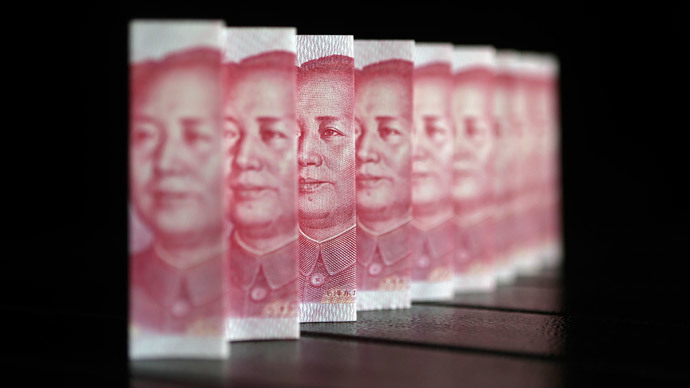
China’s currency fell sharply in value on Tuesday following the central bank’s decision to improve its “central parity system” to better reflect market development in the exchange rate between the Chinese yuan against the U.S. dollar.
Effective beginning Tuesday, daily central parity quotes reported to the China Foreign Exchange Trade System before the market opens should be based on the closing rate of the inter-bank foreign exchange rate market on the previous day, supply and demand in the market, and price movement of major currencies, the People’s Bank of China (PBOC) said.
The PBOC cited a strong U.S. dollar and sharp appreciation in the RMB real effective exchange rate as key considerations behind the policy change.
The PBOC said the RMB’s central parity has deviated from its actual market rate “by a large extent and for a long duration,” which has “undermined the authority and the benchmark status” of the central parity system.
Following the change, the central parity rate of the yuan weakened sharply to 6.2298 against the U.S. dollar compared to 6.1162 on Monday, down nearly 2 percent, a record low since April, 2013.
MORE MARKET-ORIENTED
The PBOC vowed more efforts to promote foreign exchange reform — make it more “market-oriented”, open up foreign exchange market further with inclusion of qualified foreign entities and gradually unite onshore-offshore RMB exchange rate.
China’s foreign exchange reform officially started in July 2005 when the central bank decided to unpeg the yuan against the U.S. dollar and allowed it to fluctuate against a basket of currencies. The yuan was allowed to rise or fall by 0.3 percent from the central parity rate each trading day in China’s spot foreign exchange market.
The trading band expanded to 2 percent since March last year, with the market expecting it to expand to 3 percent in the near future.
Analysts believe the central bank’s policy will allow market forces more sway in exchange rate determination and help China to send the RMB into the benchmark currency basket of the International Monetary Fund (IMF).
“Today’s move is likely intended to improve the ‘market-driven ‘ quality of the PBOC daily fix, so that it can qualify to be used by the IMF as a Special Drawing Rights (SDR) reference rate,” said Wang Tao, chief China Economist at UBS.
Wang expects the USD-CNY exchange rate to be around 6.5 by the end of 2015, up from his previous forecast of 6.3.
NOT EXPORT STIMULUS
Analysts have dismissed the idea that the central bank’s move is China purposely adopting a currency devaluation strategy to counter a slump in exports.
Official data showed Saturday that exports fell to 7.75 trillion yuan (1.24 trillion U.S. dollars) in the first seven months of this year, down 0.9 percent from a year ago. In July, exports declined by 8.9 percent.
“Exports have indeed been soft this year, but this is largely a reflection of sluggish external demand,” the HSBC said in a research note.
“In an environment of a soft global recovery, the benefits of beggar-thy-neighbor competitive devaluation are neither clear nor easy to reap.”
The HSBC believes Chinese policy makers have sufficient policy ammunition to boost domestic demand to offset external headwinds.
“Both monetary and fiscal policies are becoming more accommodative and better coordinated, as evidenced by the reports that policy banks will issue more than 1 trillion yuan of financial bonds to support infrastructure investment.”
The HSBC forecast an additional 25 basis points (bps) interest rate cut and 200 bps reserve ratio cut in the second half of this year.
“The combination of monetary and fiscal policy support should help ensure that the economy on a path of cyclical recovery and achieve the growth target of around 7 percent.” it added.